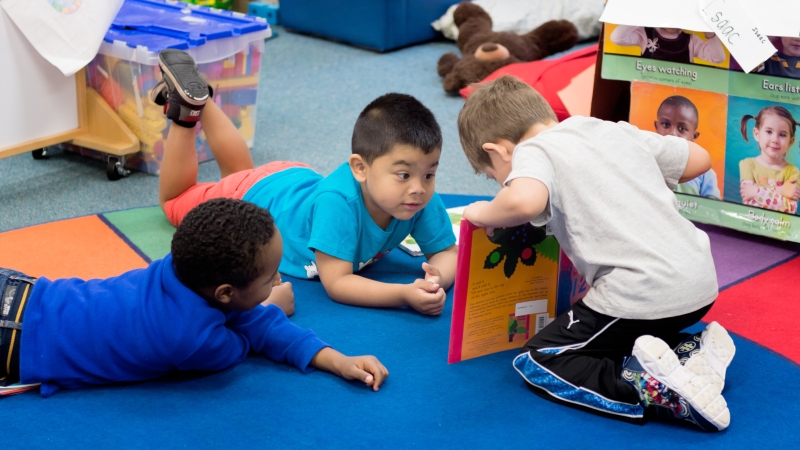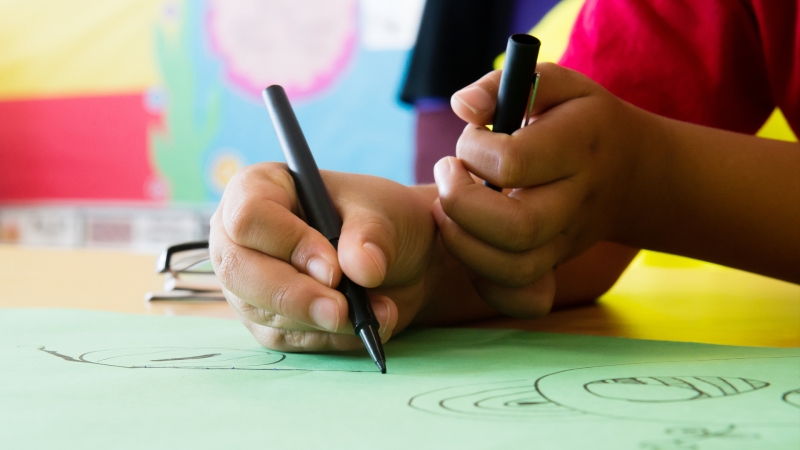
The Art of Persuasion
Persuasion is used quite broadly in today’s society.
It is better to debate a question without settling it than to settle a question without debating it.
Joseph Joubert
I Wanna Iguana is the delightful story of a young boy’s efforts to convince his mother to let him have an iguana that his best friend is giving away. Alex and his mother write back and forth a series of humorous notes and drawings that capture arguments he puts forth to persuade his mother to let him have an iguana for a pet. The book can serve as an excellent introduction to the art of persuasion. Persuasion is an important thinking skill and, as Alex learns in this story, it is one that can be learned through practice and reflection.
Persuasion is used quite broadly in today’s society. Every time you turn on the television, numerous advertisements are promoting their products; free samples are distributed through the mail and in stores to entice you to try out and then purchase a product; and there are multiple venues for giving advice and suggesting what you should buy, how you should dress, what you should eat, where you should shop, travel, and the list goes on. Therefore, it is important for children to learn about persuasion and become aware of the techniques that are used to persuade others. For example, do Nike shoes really help you run faster? Or is it just the logo and branding that have made the company so successful? As children become adept at identifying how others persuade, their thinking skills are strengthened through a continuous and critical examination of claims, ideas, questions, and research. They gradually learn to identify key aspects of a sound claim or argument and are better able to make decisions and/or persuade others based on sound reasoning and thinking.
Over 4,000 years ago, Aristotle identified three clusters of emotion and experiences that can be used to influence decisions or to persuade others. Aristotle believed that good people need to be aware of these three “appeals” so that they are able to use them to persuade others and to protect themselves from others who might try to persuade them. The three appeals are Ethos (authority, expertise, or credibility), Pathos (emotions), and Logos (logic, evidence or facts). Let’s further explore each one.
Logos is employing logic, providing facts or sharing evidence that most will agree is ‘real’. Logos may take the form of details, facts, statistics, and other information that has some form of empirical evidence to support its claim. In I Wanna Iguana, Alex uses Logos when he states that iguanas are quiet and small. His mom replies with logos when she tells him that they can grow to be over six feet long! Fact checking is a critical component of logos. Two questions that can guide children’s thinking about Logos are: from whose viewpoint are we seeing or reading or hearing? What is the evidence, and how reliable is it?
Ethos is about trust. It appeals to the authority or credibility of the speaker or writer and is created through confidence in the knowledge, experiences, expertise, credentials, and/or professional standing of the speaker. A good example of ethos is when expert testimony is brought in to court and is used to persuade a jury. Teaching Ethos to children helps them understand why they need to listen to the dentist (an expert who knows and understands what is necessary to have healthy teeth) or their pediatrician who tells them the importance of eating healthy foods. However, they should also be aware that Ethos can be used to convince when there is no evidence to support the claim. In I Wanna Iguana, Alex’s mother uses Ethos to question his credibility by bringing up a past experience when he brought home the class fish. What evidence can he provide that he is ready to take care of the iguana?
Pathos is the art of appealing to another’s emotions to persuade. It is used to attract an audience’s sympathies and imagination. This occurs when guilt, love, security, greed, pity, humor, etc. are induced in the reader or listener. In the story I Wanna Iguana, Alex uses Pathos in his first note when he tells his mom that if he doesn’t take the iguana, it will go to Stinky, another friend, and his dog will eat it, thus hoping to elicit an emotional response to his plight. Images are especially effective in arousing emotions, and throughout the story, Alex and his mother use images and pictures to illustrate their opposing arguments. There are numerous examples of how images are used to elicit emotional reactions in the world today. For example, images of shrinking glaciers often accompany a plea to address global warming and images of kittens and puppies accompany information about animal adoptions. As children become aware of Pathos and are able to identify examples of it in everyday life, they are better prepared to recognize its use and understand its role in persuasion,
Children can become familiar with each of the appeals by finding, identifying, and discussing numerous examples in their everyday lives. Advertising is a great place to begin to teach these appeals. Magazines and commercials are filled with illustrations of how the different appeals are used to persuade others. As a family, you may want to collect examples of the different appeals over time. Reflect on and discuss this question: which ads have persuaded you or someone in your family to try an item? What impacted your decision? Would you make a different decision now?
Gradually children learn that all of the appeals are important and interdependent. To win a good argument, you must be credible, well- informed, and have a researched-based knowledge of the topic, claim, or issue. While stories, images, and pictures can elicit emotions in order to persuade others, they are not enough; more information and evidence is needed. Facts, statistics, and empirical evidence are critical and, if a claim is made, evidence must be provided, and this may be the most important lesson of all.
As children become aware of varying viewpoints and learn to develop sound arguments that persuade others, thinking is critical and it takes practice. It is important that children have opportunities to research and formulate sound arguments about subjects that are of genuine interest to them. When they need a new pair of running shoes, instead of just purchasing a well known brand, you might have them read about the different shoes and formulate a sound argument about why their choice is the best one. This could also be used when deciding on a new pet, for example, which breed of dog is best for your family? As your children practice the art of formulating and designing convincing arguments with evidence to support their thinking, the art of persuasion will be another powerful tool that will help them navigate the many forms of persuasion that are part of our everyday lives.
Related Pages

Research - The Road to Action
Teaching children how to research is a critical skill that can start early and will serve them for a lifetime. In today’s world, where there is so much information readily available at our finger tips, it is never too early to begin to teach children how to search with a “critical eye”.

Creative Problem Solvers
The significant problems we have cannot be solved at the same level of thinking with which we created them.

Creative Brainstorming with SCAMPER
Brainstorming encourages children to think of new ideas, combine existing ideas in new ways, and generate original and often unusual ideas.

Colorful Thinking
What color is your thinking? Six Thinking Hats, a book by Edward DeBono, provides a colorful structure to guide children as they discuss a topic or issue from six different perspectives.

Analogies: Creative Connections!
A facility for working with analogies gives children a structure for generating creative ideas, seeing complex relationships, and making unusual comparisons.

Decisions and Outcomes
“You can’t judge a book by its cover” is an age-old adage that lies at the heart of this decision-making strategy.

Point of View
Learning the role of view point and understanding that each person has a unique point of view is one of the most important thinking skills that a child can acquire.
